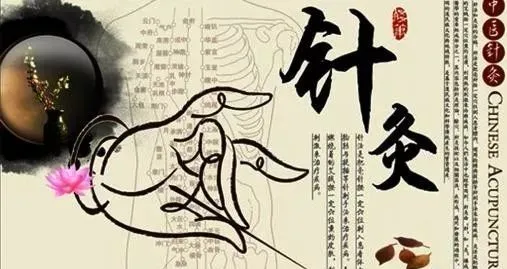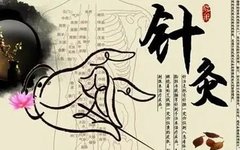What is Acupuncture
Acupuncture refers to the combined techniques of needling and moxibustion. Needling involves inserting fine needles into specific acupuncture points on the patient’s body, using techniques such as twisting and lifting to treat diseases. Moxibustion involves applying burning moxa (mugwort) to specific acupuncture points to utilize heat stimulation for therapeutic purposes.

Acupuncture is one of the commonly used methods in ancient China for treating various diseases. It is a unique therapeutic approach in China, characterized as an “external treatment for internal conditions.” It works through the meridians (jingluo) and acupuncture points (shuxue), employing specific techniques to treat systemic diseases. In clinical practice, the diagnosis follows traditional Chinese medicine (TCM) methods to identify the cause of illness, pinpoint the key issues, differentiate the nature of the disease, determine which meridian and organ are affected, and classify it according to exterior/interior, cold/heat, and deficiency/excess patterns. Subsequently, an appropriate acupuncture point prescription is made for treatment, aiming to unblock the meridians, regulate qi and blood, restore relative balance of yin and yang, and harmonize organ functions, thereby achieving disease prevention and treatment. Acupuncture therapy is part of the heritage of traditional Chinese medicine and is a unique ethnic medical method in China, having made significant contributions to health preservation and the continuation of the nation for centuries, and it continues to fulfill this role, being trusted by the general public.
Acupuncture consists of “needling” and “moxibustion” and is an important component of TCM. Its content includes acupuncture theory, acupuncture points, acupuncture techniques, and related instruments. Throughout its formation, application, and development, it has distinct cultural and regional characteristics of the Chinese nation, representing a valuable heritage born from the cultural and scientific traditions of the Chinese people.
How Does Acupuncture Heal?
The question of how acupuncture can heal has been studied both historically and contemporarily, with many theories proposed, yet no definitive conclusion has been reached. The primary reason is that current research on adjusting human functions often limits itself to aspects of neural reflexes, biochemical reactions, and the physical movements of biomolecules. Consequently, both domestic and international research on acupuncture often remains within these confines, failing to delve into the potential functions of the human body. Through long-term exploration and research into acupuncture treatment mechanisms, I have discovered that the nerve impulses triggered by acupuncture points can activate the body’s latent functions, exerting a strong regulatory effect on various systems and organ functions, primarily governed by the nervous system, to prevent and treat various diseases and combat aging. This is the fundamental function of acupuncture.
It is well-known that humans possess many functions. Ancient Chinese philosopher Laozi stated that humans have functions within the universe; Xunzi also remarked that humans can overcome nature. Modern science has confirmed that the human body indeed has many functions, but only 10% are manifest and commonly utilized, while 90% remain latent and have yet to be activated. How can the human body possess so many functions? This is due to the long evolutionary process where humans developed certain abilities to defend against harm, seek resources, and sustain life, enduring numerous hardships and diseases, leading to the emergence of these capabilities. Some of these abilities, having been consistently applied, become manifest; others, although inherited, have gradually become latent due to changes in the environment. Every function has a set of functional devices that operate in an organic, close, and intricate manner within the human body, primarily including the central nervous system, internal organs, and the body itself. When disease occurs, the central nervous system can establish pathological reflexes to communicate many functional devices, enhancing measures to prevent and treat ailments. This is also a result of the body’s evolutionary adaptation to environmental survival responses.

Research results indicate that acupuncture can activate the body’s latent functions simply by selecting acupuncture points based on the information of “cutting the meridian” and performing needling according to the sensations felt during needling. This activation of the functional devices can exert a powerful regulatory effect. This not only enhances the efficacy of treatment but also addresses numerous difficult-to-treat conditions and terminal illnesses, such as male and female sexual dysfunction, infertility, underdeveloped testicles, immature uterus, mammary gland hyperplasia, hydrocephalus (or accompanied by brain atrophy), vascular headaches, neurogenic deafness, dwarfism, etc. Therefore, the functional devices of the human body are not only local units of bodily functions but also local units of acupuncture’s “cutting the meridian” and treatment, which is the secret of meridian diagnosis and treatment.
Various qigong therapies, tuina massage therapies, psychological therapies, and behavioral therapies also aim to activate the body’s various latent healing functions. However, acupuncture’s ability to activate latent functions is much faster, more effective, simpler, and without side effects compared to the aforementioned therapies. Therefore, how to further utilize acupuncture methods, or patient-friendly modified methods similar to acupuncture, to safely, adequately, and flexibly activate the body’s latent functions for disease prevention and anti-aging, is worthy of in-depth research. This principle may potentially create a new medical system with Chinese characteristics, benefiting humanity.
Basic Theories of Acupuncture
1. Theory of Meridians
What are meridians? In ancient times, the laboring people gradually recognized through long-term medical practice in combating diseases that there exist certain channels within the human body through which “qi and blood” flow. These channels are referred to as meridians in TCM. They connect the internal organs to the limbs, crisscrossing throughout the body, playing a crucial role in the circulation of qi and blood, similar to the human cardiovascular and lymphatic systems. Moreover, through the complex connections of the meridians, the internal and external, superficial and deep, five organs and six bowels, limbs and bones, sensory organs, and skin are unified into an organic whole, adapting to the external environment, akin to the human nervous and endocrine systems. Given the significant role of meridians, they constitute a highly intricate and complex system, which includes the main meridians and collateral meridians. The main meridians are the primary components of the meridian system, large and straight, deep and internal, further divided into twelve primary meridians and eight extraordinary meridians, along with the twelve meridian branches, twelve sinews, and twelve cutaneous regions; collateral meridians are branches of the main meridians, smaller and oblique, superficial and external, further divided into fifteen larger collateral meridians and numerous smaller collateral branches distributed throughout the body.
When the human body suffers from disease, imbalances in yin and yang, disharmony of the internal organs, and excess or deficiency of qi and blood are closely related to the meridians and acupuncture points. Only by familiarizing oneself with the circulation, distribution, and physiological functions of the meridians can one use the theory of meridians to explain pathological changes, guide syndrome differentiation, and conduct acupuncture treatment.
2. Zang-Fu Diagnosis and Treatment
Zang-fu refers to the collective term for the internal organs. The ancients referred to it as “cangxiang,” where “cang” means hidden within, referring to the internal organs; “xiang” means signs or images, indicating the physiological and pathological manifestations of the internal organs. In TCM, the heart, liver, spleen, lungs, and kidneys are termed the five zang organs, while the small intestine, gallbladder, stomach, large intestine, bladder, and sanjiao are termed the six fu organs. The theory of zang-fu is characterized by centering on the five zang organs, coordinating with the six fu organs, and connecting with the five bodies, five palaces, and nine orifices, forming a cohesive “five zang system.” Although the names of the zang-fu organs are similar to those in Western medicine, their physiological and pathological meanings differ significantly.
Zang-fu diagnosis and treatment form the foundation of various dialectical treatments in TCM. It is based on the physiological functions and pathological manifestations of the zang-fu organs, combined with the eight principles, etiology, and meridian theories, through the four diagnostic methods to analyze and summarize the symptoms of diseases, inferring the causes, mechanisms, affected locations, and nature of the disease, as well as the balance of pathogenic and healthy factors, to determine the syndrome and subsequently decide on treatment principles and prescriptions based on the syndrome.
Acupuncture treatment is frequently applied in the context of zang-fu diagnosis and treatment. The qi of the zang-fu organs that is transmitted to the surface of the body is referred to as acupuncture points, which are the sites for acupuncture treatment. Acupuncture points are closely related to the zang-fu organs, and in cases of disease, they reflect the pain and symptoms. The general pathway is: pathogenic qi → meridian system → dysfunction of zang-fu organs → symptoms often manifest at acupuncture points. During treatment, the meridian system is adjusted to expel pathogenic factors and stabilize the zang-fu organs.
3. Yin-Yang and Five Elements
The theory of yin-yang and five elements is a fundamental philosophical theory from ancient China, summarizing the observations and understandings of the natural world through long-term life and production practices. It serves as a methodology for understanding and explaining the natural world. The ancients emphasized “biological transformation” through the five elements and “extreme change” through yin-yang, akin to modern concepts of “quantitative change” and “qualitative change.” Since its application in the field of TCM, it has become the theoretical foundation for zang-fu and meridian theories, and serves as a methodology for understanding the life processes and disease processes of the human body, including birth, aging, illness, and death, elucidating physiological phenomena and pathological changes, guiding dialectical treatment of diseases.
The yin-yang theory posits that the natural world is material and evolves, develops, and changes through the interaction of yin and yang. As a natural science, TCM naturally absorbs this advanced philosophical theory. The human body is a unified whole, and whether in the manifestation of physiological functions or the evolution of pathological processes, it is all within the dynamic process of yin and yang. Therefore, TCM believes that the occurrence of diseases is a result of imbalances in yin and yang. The use of acupuncture to treat diseases aims to restore the balance of yin and yang in the body. In clinical acupuncture, methods such as selecting points on opposite sides or corresponding points above and below are commonly employed, reflecting the acupuncture principle of yin-yang interaction, which emphasizes the core idea of balancing yin and yang.
The basic significance of the five elements theory is to represent five fundamental substances in nature that correspond to five abstract functional attributes, reflecting the phenomena and laws of mutual generation and restriction among things. The five elements theory has extensive guidance and significant roles in clinical acupuncture.
Disclaimer: The content of this article, if it involves formulas or therapies, is for reference only and should not be used indiscriminately. The article and images are sourced from the internet; if there is any infringement, please contact for removal.
Share with those who care.
The more people see it, the more health there is!
Today's Recommendations

